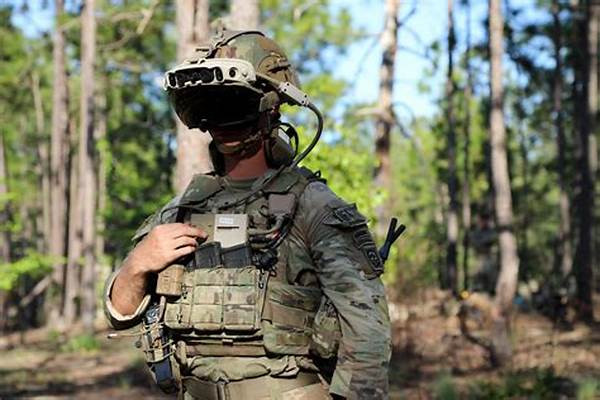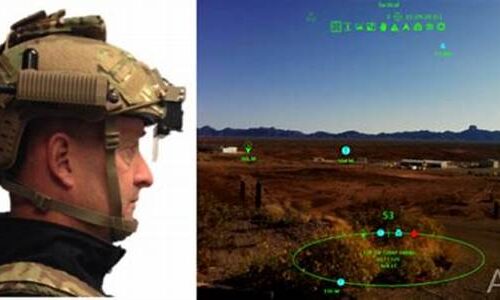Advances in GPS-Enabled Soldier Gear
The advent of GPS-enabled soldier gear marks a significant evolution in military technology. These advanced systems integrate satellite navigation capabilities directly into personal equipment, allowing for precise positioning and improved situational awareness on the battlefield. This technology is not only pivotal for strategic operations but also enhances the safety and effectiveness of military personnel. The modern battlefield demands rapid response and adaptability, which are facilitated by the integration of GPS-enabled soldier gear. These devices provide real-time data, enabling soldiers to navigate unfamiliar territories with confidence and accuracy. Moreover, the advancement in GPS technology aids command centers in tracking troop movements, thus optimizing operational efficiency and reducing risks. As military engagements become increasingly complex, the role of GPS-enabled soldier gear becomes ever more critical, ensuring that armed forces maintain a tactical edge in various environments.
Importance of GPS-Enabled Soldier Gear
1. GPS-enabled soldier gear enhances navigation capabilities by providing accurate positioning data.
2. This technology improves communication between unit members through real-time location sharing.
3. The integration of GPS technology ensures better operational planning and coordination.
4. By reducing time spent on navigation, soldiers can focus on mission-critical tasks.
5. GPS-enabled soldier gear contributes to the safety and efficiency of military operations.
Strategic Benefits of GPS-Enabled Soldier Gear
The strategic benefits conferred by GPS-enabled soldier gear are manifold, extending beyond basic navigation to encompass enhanced command and control capabilities. Such gear allows commanders to monitor troop locations meticulously, facilitating informed decision-making processes. Coupled with data analytics, it enhances strategic planning and execution of military campaigns. In addition to providing superior navigation and positioning functionalities, GPS-enabled soldier gear incorporates features that enable soldiers to operate seamlessly in different terrains and under various conditions. These devices often include built-in communication systems that allow for better interoperability among units, ensuring fast and precise information exchange even in isolated or hostile areas. By utilizing such sophisticated equipment, military forces can achieve higher levels of operational readiness and mission effectiveness.
Technical Aspects of GPS-Enabled Soldier Gear
1. The core of GPS-enabled soldier gear is the integration of satellite technology into wearable devices.
2. These devices offer portable and resilient solutions suitable for harsh battlefield conditions.
3. GPS-enabled gear facilitates precise geolocation, crucial for mission planning.
4. Innovations in this sector include miniaturization and enhanced battery life.
5. GPS-enabled soldier gear supports integrated communication systems for tactical use.
6. The adoption of GPS technology mitigates risks associated with manual navigation.
7. Real-time data sharing among units is made possible through these advanced systems.
8. Its application extends to reconnaissance, logistics, and personnel management.
9. The development of GPS-enabled gear is driven by continuous research and technological advancements.
10. These tools represent a paradigm shift in military engagements, enhancing operational outcomes.
Tactical Applications of GPS-Enabled Soldier Gear
The diverse tactical applications of GPS-enabled soldier gear underscore its significance in modern military operations. From enhancing navigational precision to supporting strategic maneuvers, these devices play an instrumental role in augmenting combat efficiency. In reconnaissance missions, for instance, soldiers are equipped with GPS-enabled systems to gather and transmit critical data, thereby informing operational decisions. The deployment of GPS-enabled soldier gear in logistical operations further exemplifies its tactical utility. Supply chains and resource allocation can be finely tuned, ensuring that military units receive timely support. Additionally, the incorporation of advanced GPS technology in training regimens allows for realistic simulation of combat scenarios, preparing soldiers more effectively for real-world engagements. This comprehensive application spectrum highlights the integral role of GPS-enabled soldier gear in bolstering military effectiveness across various domains. As military strategies continue to evolve, the reliance on such advanced technological solutions is anticipated to grow, fostering a well-coordinated and adaptable force.
Enhancing Operational Efficiency with GPS-Enabled Soldier Gear
With its profound impact on operational efficiency, GPS-enabled soldier gear stands as a cornerstone of modern military technology. The integration of this technology streamlines command structures and facilitates precise execution of missions, addressing both strategic and tactical demands. As a tool for tactical superiority, GPS-enabled gear provides real-time updates, ensuring swift responses and adaptive strategies. The continuous development of GPS-enabled soldier gear underscores a commitment to innovation in military operations. Advances in satellite technology and portable design make these devices more accessible and reliable. The introduction of user-friendly interfaces further eases the adoption of GPS technology among soldiers, enhancing their operational effectiveness and overall mission outcomes. As military forces strive to maintain tactical superiority, the role of GPS-enabled soldier gear in shaping the future landscape of defense cannot be overstated. Its deployment enhances a military force’s capability to adapt to dynamic combat environments, reinforcing the critical demand for advanced technological integration in contemporary warfare.
Conclusion: The Future of GPS-Enabled Soldier Gear
In conclusion, the evolution and deployment of GPS-enabled soldier gear signify a new era in military technology, marked by heightened situational awareness and strategic precision. The continued advancement in this field promises to revolutionize how military operations are conducted, providing armed forces with crucial advantages in both offensive and defensive capabilities. As the future of warfare increasingly hinges on technology, the role of GPS-enabled soldier gear will become ever more pivotal. Investment in research and development, coupled with collaborative efforts among defense technology firms, remains essential in pushing the boundaries of what this technology can achieve. Ultimately, the widespread adoption and integration of GPS-enabled soldier gear within military structures will not only enhance operational effectiveness but also safeguard the lives of soldiers by equipping them with state-of-the-art navigation and communication tools. Within the fast-paced and unpredictable theatre of war, such innovations could prove to be decisive, ensuring military forces remain efficient, agile, and resilient in the face of evolving threats.





